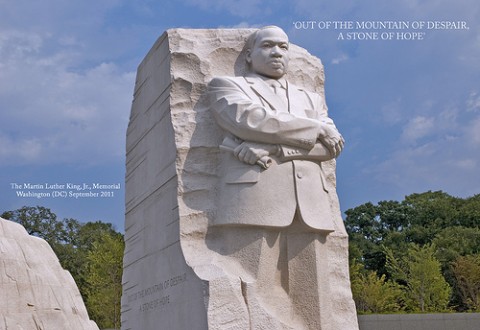“Get to know the collision of hope and despair”
August 20, 2014 2 CommentsFollowing the recent New England Food Summit, my IISC colleague Cynthia Silva Parker and I turned to one another and essentially said, “Now the real work begins.” We had wrapped up co-facilitating a two day gathering of over 150 delegates from around the region with one 0f the goals being to bring everyone in attendance to a common understanding of how racism exists in our food system. In a debrief by the core team for the effort about a week later, the comment was made to nodding heads that a strong hope going forward is that white people become much more ardent and active throughout the region raising the question of how race and racism are operating in the systems of which we are a part.
Two months later, this hope is both challenged and echoed by recent events and in an article that appeared in the St. Louis Post-Dispatch following the killing of Michael Brown in Ferguson, Missouri. Washington University Professor of Law John D. Inazu makes an appeal to not make what is unfolding in Ferguson “a black thing.” More pointedly, he asks white friends and colleagues to spend more time getting to know the real and tragic dynamics of racism in this country. While the article is directed primarily at residents of greater St. Louis, it’s message speaks to all. It is well worth the read, and here I’d like to rift on Inazu’s entreaty . . .
In conversations about racial inequity, I am increasingly approached by agitated white colleagues asking what they can do. Here is a response (and know that I am also talking to myself here):
- Before striving to concoct or be a part of any solution, be willing to get to know (as Inazu puts it) “the collision of hope and despair that confronts great people faced with insurmountable obstacles.” Seek out stories of injustice and oppression. Don’t back away. Believe them. Lean into them. Share them.
- Understand that race is, in the words of Jay Smooth, a conversation that is “designed to trip us up,” and be willing to have it anyway. Or as Mellody Hobson says, don’t strive for color-blindness, but rather “color bravery.”
- If you hear yourself or someone else saying, “It’s about class, not race,” disaggregate the data and sit with the startling results.
- Read the growing literature on implicit bias. Take an implicit bias test and be prepared to be surprised. Learn de-biasing strategies and use them.
- Familiarize yourself with the systemic and inter-sectional nature of racism, how it operates across time and institutions. To this end, read john a. powell’s work, including Racing to Justice. Watch Cracking the Codes: The System of Racial Inequity. Ask other white people to do the same.
- Become familiar with your privilege. Know that our minds seem to want to consistently deny its existence. (Also, check out this very recent blog post – “Explaining White Privilege to a Broke White Person“)
- Question what you read and watch. Become aware of different narratives about race at play in our country and communities. Pay attention to stock stories, concealed stories, and stories of resistance. Support equitable counter stories.
- Be willing to bring up race in all-white gatherings and private conversations. Put questions about structural racial inequity on the table even when it isn’t the formal topic of conversation.
- In your social change work, aim for meaningful diversity, inclusion and power-building beyond tokenistic representation.
For more racial justice-conscious reporting and commentary on developments in and surrounding Ferguson, follow Colorlines. And tune in to the good work and resources of Race Forward, Center for Social Inclusion, and PolicyLink.


2 Comments
OUTSTANDING post, mr. sir.
🙂